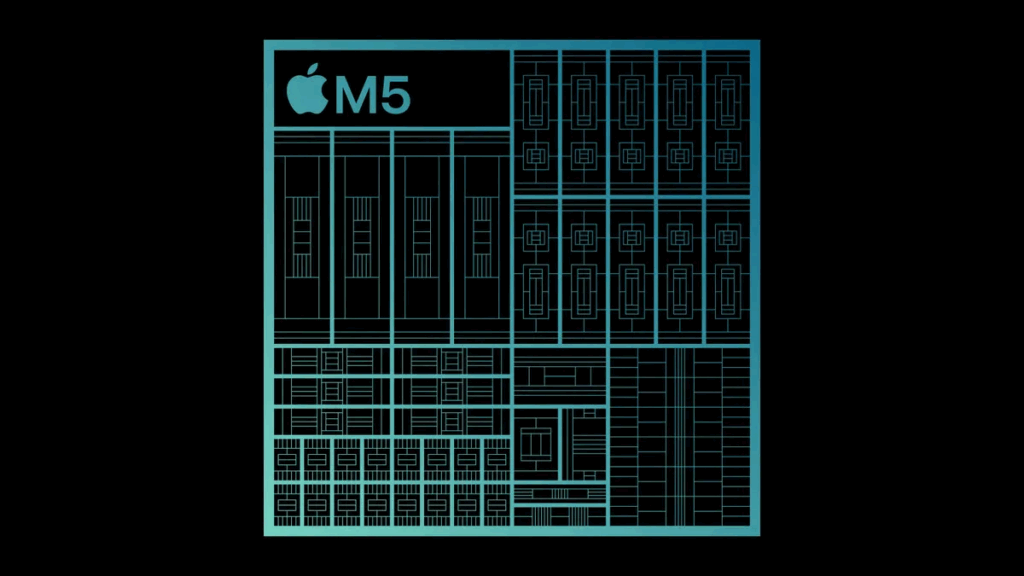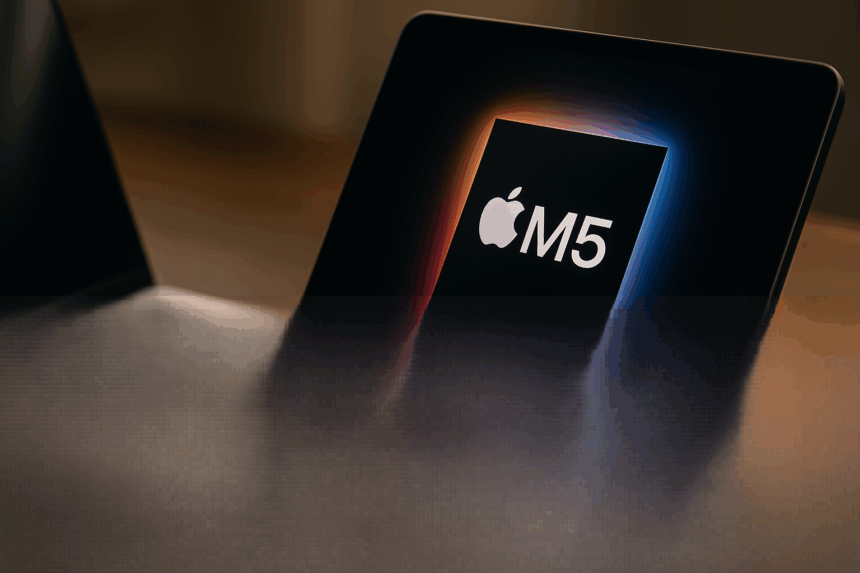Apple Boosts Performance, Efficiency with M5 Chip
Apple introduces the M5 chip, an evolution that merges power and intelligence across its devices. The new silicon now powers the latest iPad Pro, MacBook Pro, and the upgraded Vision Pro headset.

The M5 chip strengthens performance to new peaks through efficiency and intelligence. It integrates faster processing cores, a redesigned Neural Engine, and more sophisticated graphics capabilities — all within a smaller, smarter architecture. Every watt matters. Every cycle works harder. Apple refines its hardware ecosystem so every product feels faster, cooler, and more intuitive.
The company’s custom silicon strategy pays off again, replacing the M4 just months after its debut. The M5 turns the iPad Pro into a creative workstation and converts the MacBook Pro into a portable production powerhouse.
What’s Happening & Why This Matters
Inside the M5 Architecture
Apple engineers design the M5 on a new 3-nanometer process, allowing more transistors and higher throughput without energy loss. The chip carries 12 CPU cores and 10 GPU cores, delivering raw power while maintaining efficiency.
The Neural Engine now executes 45 trillion operations per second, tripling AI performance over the M4. That means faster on-device machine learning, enhanced image generation, and more responsive voice and text inference — all without relying on cloud servers.

Apple says the M5’s architecture focuses on intelligence over brute force. Tasks like 3D rendering, video grading, or real-time motion tracking are natively processed through optimised cores. Creators notice faster exports, gamers enjoy smoother visuals, and developers run AI code in real time.
iPad Pro: A Tablet Becomes a Studio
The iPad Pro M5 represents Apple’s most complete hardware fusion yet. The new 11-inch and 13-inch models blend tablet mobility with desktop-class power.
The Ultra Retina XDR display reaches 1,600 nits in HDR and uses tandem OLED technology for precision contrast. Artists see richer colour gradients. Designers edit 8K video footage in LumaFusion or DaVinci Resolve with no delay.

Performance jumps over three times the M4, and memory bandwidth reaches 150 GB/s. With support for Wi-Fi 7, Bluetooth 6, and Thread mesh connectivity, the iPad acts as a seamless hub between devices.
Apple equips the iPad Pro with new nano-texture glass options for reduced glare and improved accuracy in stylus work. Battery endurance powers past 10 hours under high load. Fast charging replenishes half the capacity in under 30 minutes.
The M5 iPad Pro starts at $999 (€859) for the 11-inch and $1,299 (€1,117) for the 13-inch, scaling up to 2TB storage and 16GB unified memory.
MacBook Pro: Silent Power, Maximum Range
The MacBook Pro M5 delivers another jump in Apple’s notebook strategy. The familiar unibody hides reworked internals with greater airflow and better thermal distribution. The M5 makes the MacBook Pro quieter even under peak performance.

Its ray-tracing GPU handles the latest titles like Resident Evil Village or Cyberpunk 2077 with console-level fidelity. Benchmarks reveal 45% stronger graphics output than M4 and up to 30% faster export times in Final Cut Pro.
The 14-inch model starts at $1,599 (€1,375), offering 16GB unified memory and 512GB storage, while higher configurations reach 4TB SSD capacity. Battery life stretches to 24 hours, holding steady under creative workloads.
Connectivity options include Thunderbolt 5, HDMI, and MagSafe 3, ensuring compatibility with professional workflows. For developers, the M5’s built-in AI accelerator means faster app compilation, neural model training, and real-time data visualisation.
Vision Pro: Smarter Immersion
Apple’s Vision Pro headset also gains the M5 upgrade. The update enhances frame rates, extends session endurance, and improves gesture recognition integration.

Apple introduces a Dual Knit Band accessory for added comfort and refined ergonomics. The headset syncs with the MacBook and iPad to create an expanded workspace where users drag windows across physical and virtual displays.
Developers testing mixed-reality experiences report near-zero latency between devices using the M5 ecosystem. Apple is positioning the Vision Pro as more than a headset — it’s a spatial computer — optimised for real work.
TF Summary: What’s Next
Apple unifies its computing power into one ecosystem that behaves less like a lineup and more like a network. The M5 establishes device-level intelligence that adapts instantly to the user’s workflow. Expect new creative tools across macOS and iPadOS that exploit real-time AI inference, not cloud dependence.
MY FORECAST: The M5 series hints at Apple’s next silicon breakthrough — a multi-chip design that extends from mobile to mixed reality. The company’s direction appears clear: maximum performance, minimal compromise. Apple defines its next decade through this formula.
— Text-to-Speech (TTS) provided by gspeech



